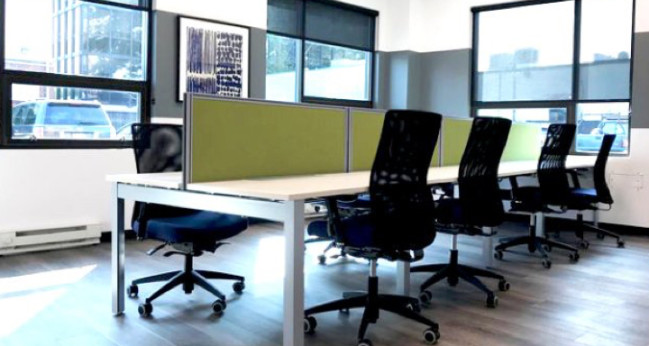Property Listing Tips On Real Estate Portal
“Real Estate portals” are an excellent way to buy and sell the property. If your property has been listed in the market longer than expected then there is definitely something going wrong in your property listing. It may be due to the steep rise in property prices and low buyer sentiment that have kept the buyers away from the market sometimes, but at the same time, there is a possibility that poor listing makes it hard to attract the buyers.
We also agree that prices and buyer sentiments play an important role. If you are listing your property in a proper manner, that could also lead to it staying unsold. Considering the tough competition, property listing on a website is never enough. People must add all the required details in order to get maximum exposure on the property. Getting more viewers on your listed property increases the possibility of the property being sold. Therefore, Commonfloor.com looks at various ways through which you can enhance visibility and drive traffic to your property listing.
This allows people to list properties along with all the details that a potential buyer needs (for example, location of the property, size, no. of rooms, no of bathrooms, costs, etc.). Seekers can fulfill their property needs by accessing these data.
Below are a few simple tips that might help you reap more visibility and increase traction in your listing-
1) Submission Of Front End Listing
Avoid front end selection as it is not compulsory. It is not necessary that your listing should come on top of the search so that everyone can see.
2) Detailed Information
A buyer doesn’t want to jump page after page to find no. of bathrooms and bedrooms. He/she would prefer much if all the important information is provided at one spot.
3) Add Testimonials
If possible add the reviews of the other tenants if your property is leased out. Adding reviews of other tenants with pictures can add authenticity and create a positive opinion among the viewers.
4) Add Proper Pictures
A picture speaks louder than words and easy to understand. You will always benefit from the addition of excellent and high-quality images. Having original photos of your property draws people’s attention the right way. So, it is always advised to click and include photos of the bedroom, kitchen, living room, bathroom, garden, terrace, and other amenities to help the viewer know how exactly your property looks. If the house that you listed on the property portal for selling is currently occupied, make sure that it must be cleaned and free of the gathering for the photoshoot. A gathering-free apartment appeals more to the buyers/tenants. You can also add pictures of the locality or street that leads to your property. It can be a positive sign of your listed property.
5) Add Video Of The Property
Nowadays, many property portals allow posting a small video of the listed property. A video tour of the property makes your listing more genuine and also helps in indexing and increasing its visibility on search engines.
6) Stick To The Facts
Online channels make your life much easier than it would have been in their absence. So, never use this medium to hide the facts. A perfect listing might guide to many customers contacting you. But, the property will only be sold on its original value.
7) Show That Your Property is Different
Your property might be sea-facing, road-facing, etc. and that is its highlight. Let your listing clearly state that. Yours might be a property where an abundance of sunlight comes. This too is an important point to highlight during property listing.
8) Future Possibilities
A prospective buyer doesn’t know that you have a big terrace where a 1BHK flat could be built and you can enjoy a rent on it. This space could also be used to build a terrace garden or penthouse. If you clearly state the future possibilities, there is a high chance that your property could fetch a better price.
Advantages Of Property Listing On A Portal
In India, the online real estate market is on the rise and more and more people are using the internet to research property. Below are some benefits of listing the property online:
-
The online property listing is usually free but there are some nominal charges for a premium listing.
-
Both buyers and sellers have direct access to information. Hence, reduce multiple phone calls and site visits.
-
One can buy, sell, and rent their property without a real estate agent.
-
The online listing is a better option than newspaper classified listing. In the newspaper listing, you have to pay every week to list your property.
-
In the online listing, most of the websites allow uploading the property images. This makes the property a lot more attractive to potential buyers than newspaper listings.
-
Through online property listings, you can reach a much wider audience.
-
Online property portals have the filter options which enable the buyer to search according to their requirements.
So after a buyer or a seller understands their requirements they go through these simple process: –
What is the process for buyers to list their properties?
Below is the step by step process for the buyers to list their property:
Process for Buyers
-
Select the Country/ City/ Region where you want to rent/buy property
-
Choose the property that is suitable for you among the entire list of properties
-
If you have not registered on the website then register with your phone number and email id.
-
After you have registered yourself an automatic message is sent to the seller to contact you
-
If that does not happen then, the contact number of the seller is available for you
-
Contact the seller and arrange an appointment
What is the process for sellers to list their properties?
Below is the step by step process for the seller to list their property:
Process for Sellers
-
Register yourself on the website
-
List the property on the website by mentioning the locality and the address
-
Fill in all the details of your property i.e. number of rooms, property size, the number of floors, etc.
-
Fill in the contact details and your property will be listed on the website
So all in all, listing your property in real estate portals makes buying, selling, and renting a property a lot easier and convenient.



